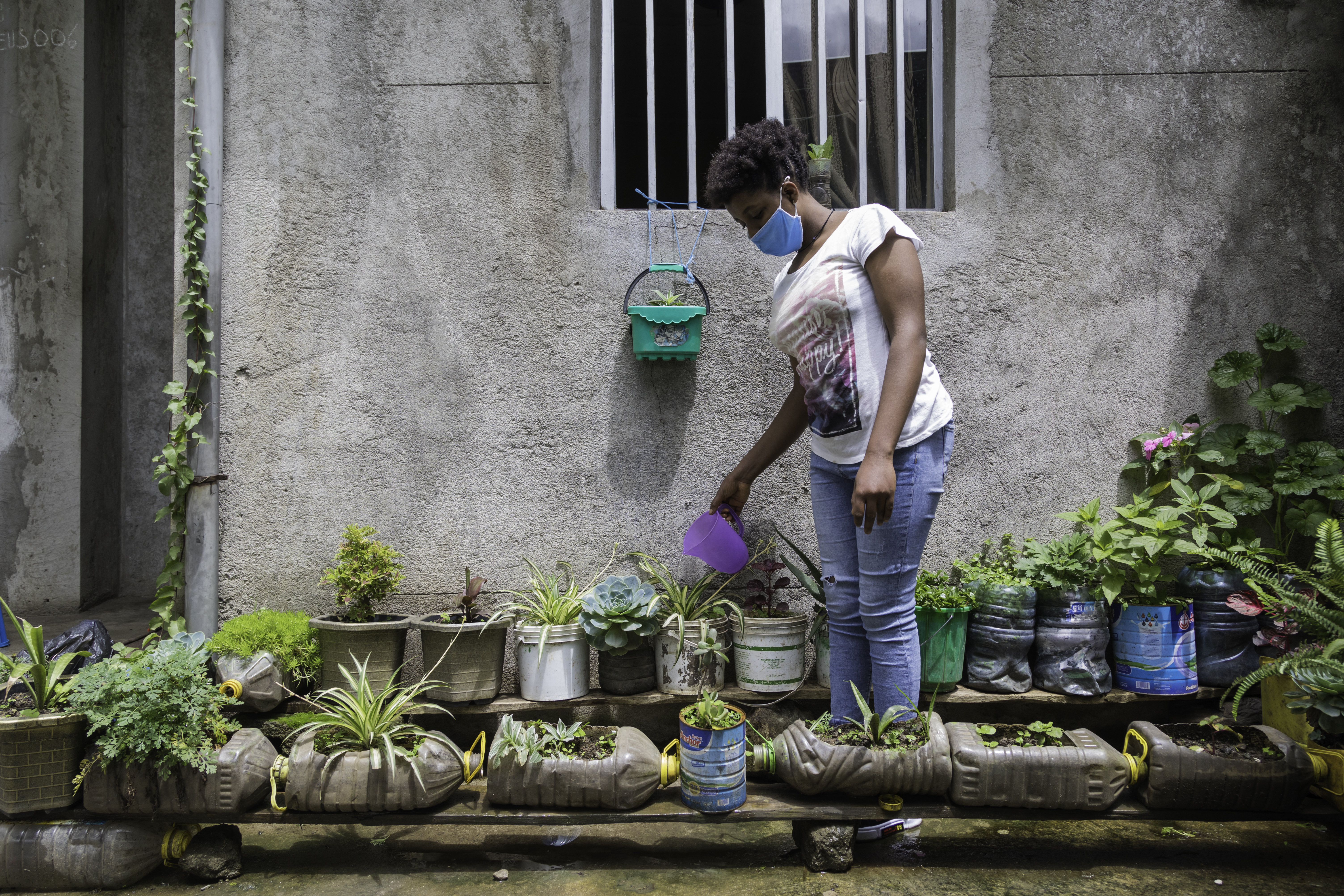
Breadcrumb
COVID in Ethiopia: from a slow start to serious socio-economic impacts
By August 6th Ethiopia had recorded 20,900 cases and 365 deaths, with a recent upsurge since mid-July, particularly in the last fortnight. A fifth of the cases (20%) but more than a quarter of the deaths (28%) occurred in the past seven days, suggesting that mortality is increasing and the number of critical cases has risen to 1% of the active cases. Ethiopia ranks 68th worldwide and 8th in Africa with South Africa in the lead followed by the two other countries with more than 100 million: Egypt and Nigeria, which have much lower numbers tested overall and per million inhabitants than Ethiopia.
What explains the slow spread and recent increase?
A combination of factors may explain the comparatively slow spread during the first four months since the first case on 13 March. These include climate (high altitude, wide temperature fluctuations, strong ultraviolet light, warm weather), demography (youthful population), serendipitous timing (later introduction, prior to the rainy season conducive to flus, after the tourist and diaspora holiday season with less visitors due to insecurity), health-seeking behaviour (limited health facilities where the virus could spread faster), transport and communications (screening at airport, limited cross border train and road transport, borders closed from March 23), global learning and early reaction (the later onset provided a chance for the government and people to know more about the pandemic and react appropriately). There may also be medical reasons explaining low fatality and high asymptomatic cases (different virus strain, vaccines such as BCG, resistance due to COVID-like earlier flu strains, genetics and immune systems). Finally, the relatively small numbers of cases and slow increase may be partly due to limited testing. The capacity for testing has increases significantly (from over 1000 by the end of April, to over 5000 by the end of May to over 8000 by the end of July) and the number of centres has increased to 50 with at least one in each region). However, modellings such as those by Imperial College London suggest that the numbers infected are likely be many times greater than those tested. Moreover, tests per million persons are still only just over 4,000.
The initial wave was associated with travelers from abroad, including foreigners and diaspora Ethiopians, followed by returnee migrant workers, with large numbers deported from the Middle East, with over 22,500 returnees from April to end July. A second wave involved transmission across borders, even after these were closed. However, containment of infections from external sources and contact tracing soon became impossible with community transmission increasing (from 10% after one month, 16% after 2 months, 62% after 3 months; two-thirds by end of June). The rainy season associated with flus, and the political unrest at the beginning of July, when crowds were not wearing masks, are probably important factors explaining the recent increase.
What have been the measures taken and their impacts?
The government response to the pandemic has been fairly rapid and proactive. Though the first case was only detected in mid-March by the end of the month public and religious meetings were banned, education institutions and borders were closed and all flights cancelled. National elections were postponed and a State of Emergency was declared on 8th of April. There have been vigorous media campaigns (messages before every phone call), and social distancing and hygiene preventative measures imposed on all public and private transport. The requirement to wear masks in public and hand washing on entering buildings may be contributing to reducing the pace of the spread. There have been a number of social protection measures at the national level, notably prohibiting laying off workers and increasing rent, adaptations of the productive safety nets, and regional measure relating to food security, utility waivers and social insurance/sick leave, though some measures are piecemeal and regions have taken different approaches. The latest measures include a decision to test 200,000 people in a two week campaign. However, since testing focuses on risk places and categories, and is not based on random sampling the extent of the community transmission cannot be accurately assessed.
How has COVID affected the country and social groups differentially?
The pandemic has had a crippling effect on the economy, and recent phone surveys by the International Food Policy Institute and the World Bank show that more than half of households report loss of income during this period. A UN report suggests a potential drop in exports by 25-30%, of remittances by 10-15%, and a loss of 10-15% of jobs potentially leading to 3-4 million unemployed.
Gender effects. Most cases reported so far were men (61%). However, a number of gender effects have been suggested including loss of jobs for women in the hospitality and tourism industry, in the informal economy notably in petty trade with the closure of markets, and for categories where women predominate, notably health extension and flower farm workers, and migrants to industrial parks. There have also been suggestions of increases in time taken by women and girls to collect water and in unpaid care work, and though the evidence base is still rather thin, risks of increasing FGM/C and early marriage compounded by school closures and reduced monitoring, interruption of SRH services, and potentially gender based violence.
Age effects. Over half the cases are among young people (56%<30; 43% in the twenties), and most deaths are among the elderly (74%>50; 43%>60). However, increasingly young people are bearing the brunt and the stress of the pandemic, which has also resulted in psychological distress, which is greater among young adults. Children and youth have been most affected by the closure of educational institutions, compounded by the interruption of vital school feeding programmes, leading to expectations that learning outcomes will decline and school drop out increase, especially among poor households; vulnerable categories of children notably street children, migrants and displaced face further risks.
Urban/rural and regional effects. More than three-quarters (77%) of positive cases were found in Addis Ababa, with none of the other regions having more than 5%. However, this may be largely a function of the testing, with almost three-quarters (73%) of tests carried out in the capital. There are also significant urban/rural and gender divides in knowledge about COVID related in part to mobile and digital connectivity.
Vulnerable categories. The pandemic has potentially greater effects on the poor and vulnerable who rely on daily wages or charity, including migrants, IDPs, refugees, deportees and returnees given restriction on cross-regional movements, as well as persons living with HIV/AIDS, with disabilities, the homeless and destitute; limited access to water and soap was noted as a constraint on protection by adolescent IDPs.
The “new vulnerable”. While COVID has increased the problems facing the poor and exacerbated inequalities, it has also created a new category of people who had relatively secure livelihoods that were disrupted by the pandemic effects, and who face challenges making ends meet. These included many self-employed and free-lancers whose work depended on global linkages in a wide range of service sectors.
COVID and other risks
The focus on COVID may have taken attention away from other serious risks, notably of food insecurity especially due to locust swarms, other health risks, especially yellow fever and cholera. However, the recent political instability and insecurity in early July eclipsed COVID, and crowds not wearing masks may well have contributed to the recent upsurge in cases.
Here to stay?
COVID in Ethiopia seems likely to become an increasing problem and a feature of life to which people are having to adapt. Whether the pandemic will get out of hand and overwhelm the health services remains to be seen, but the socio-economic impacts are likely to be lasting and far-reaching.
Photo credit: © Young Lives / Mulugeta Gebrekidan.

